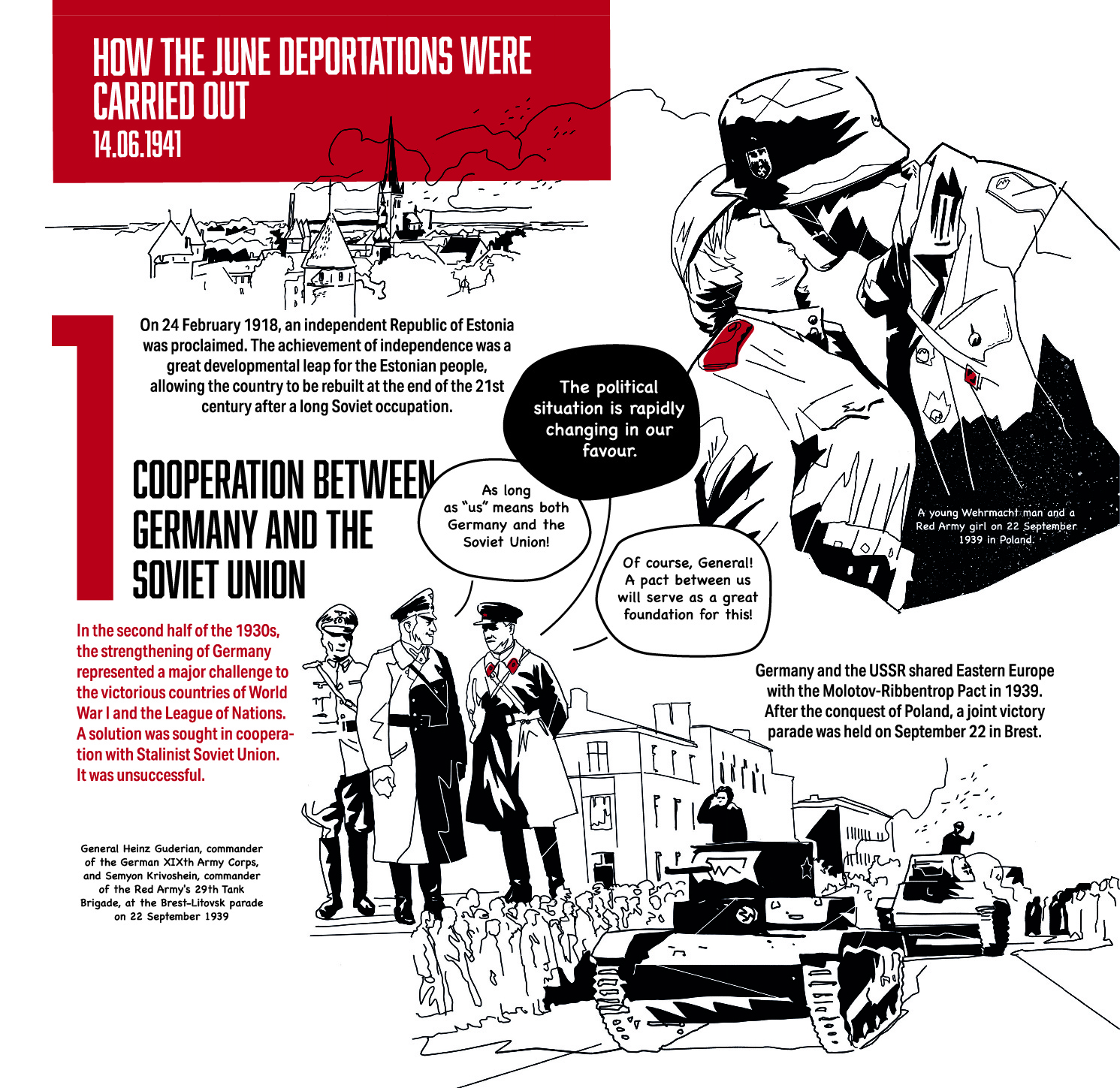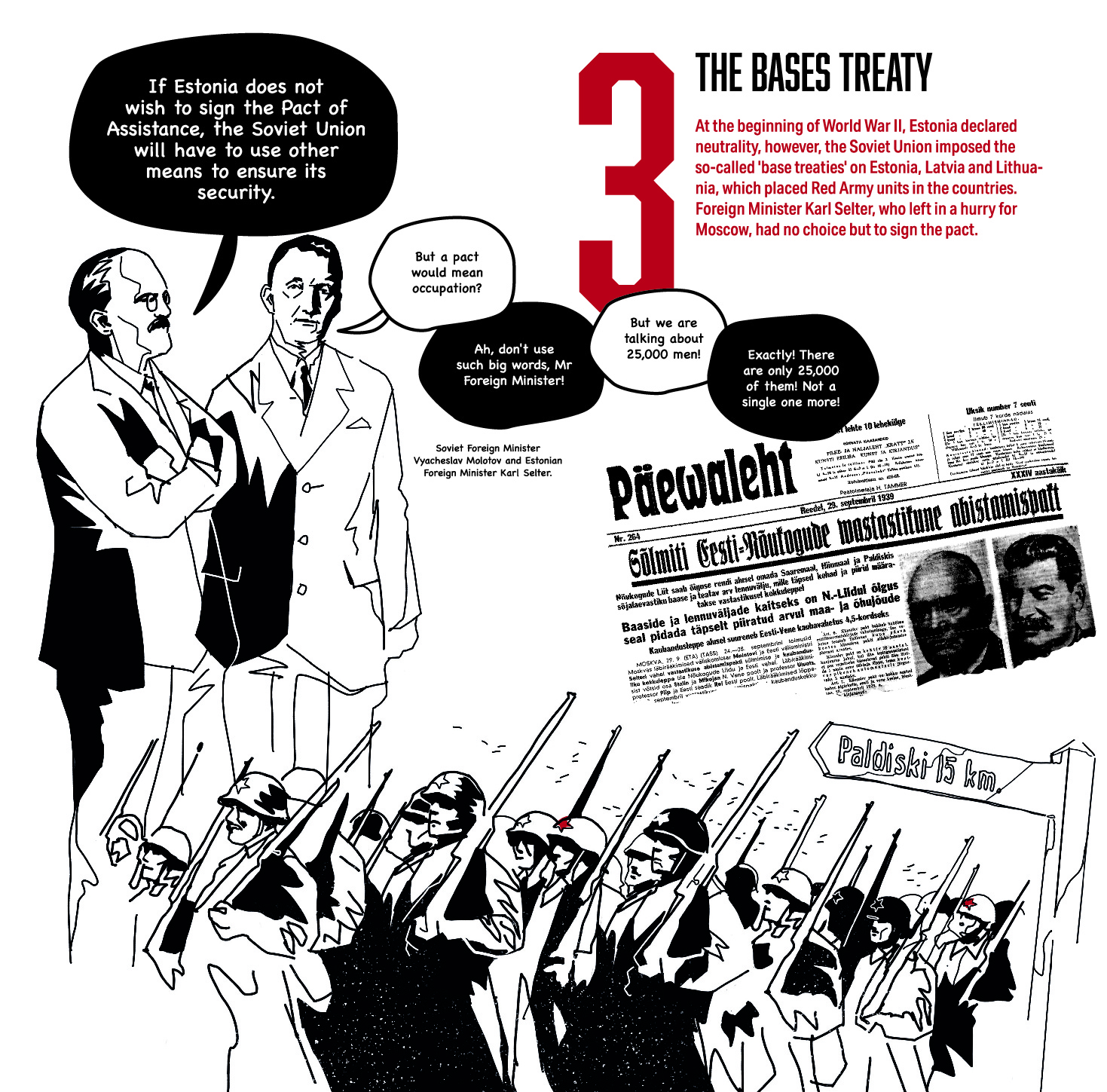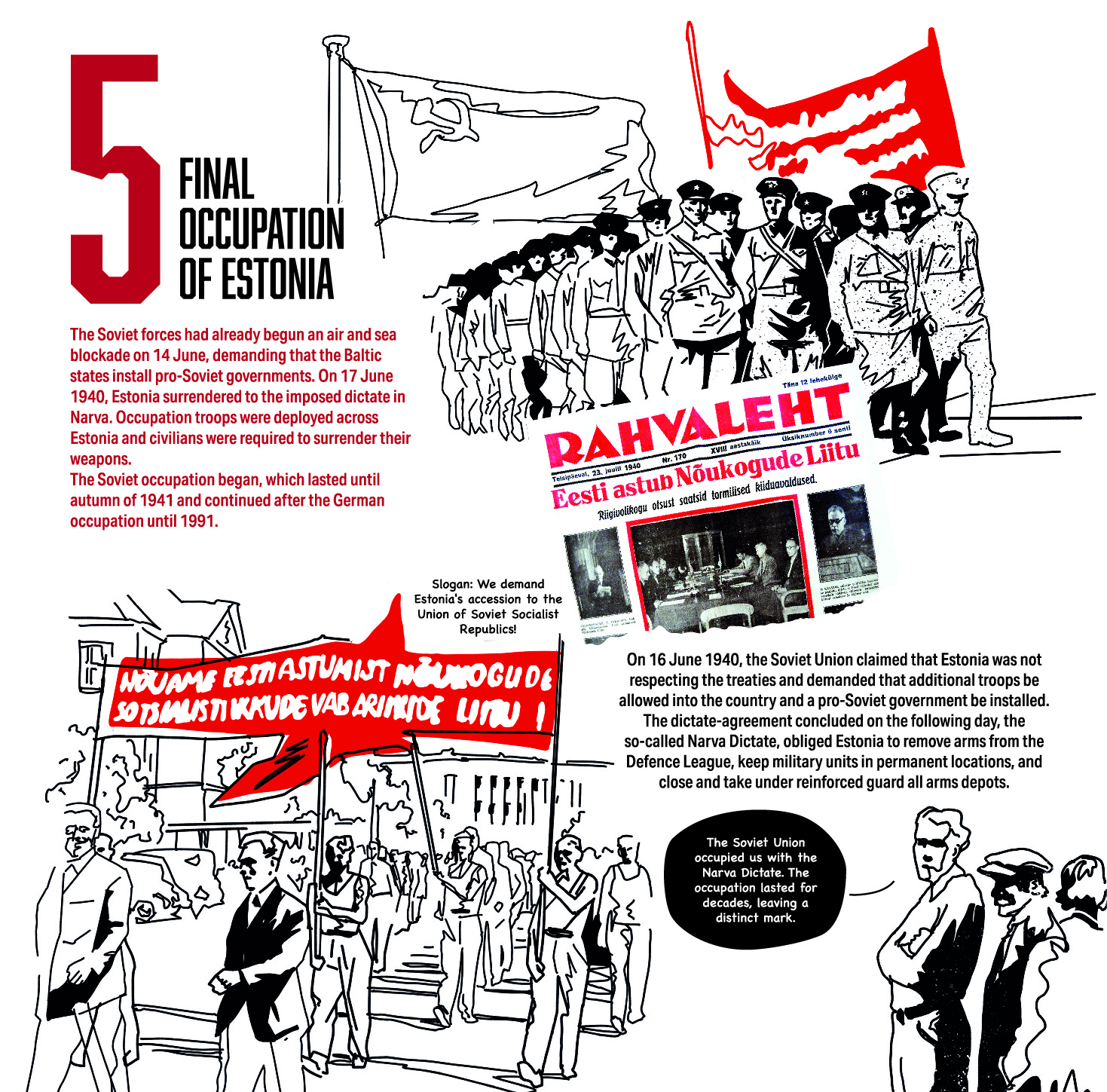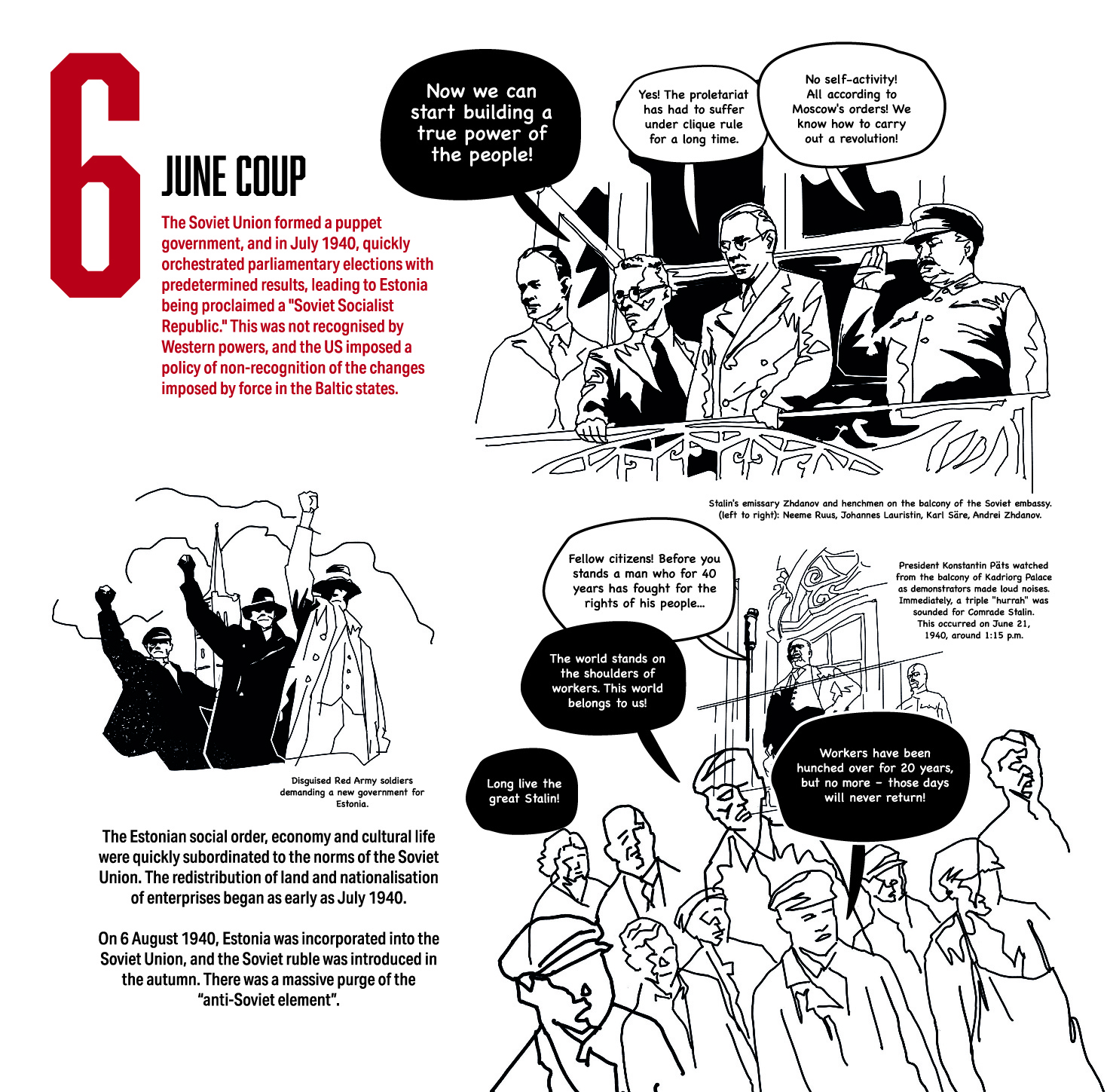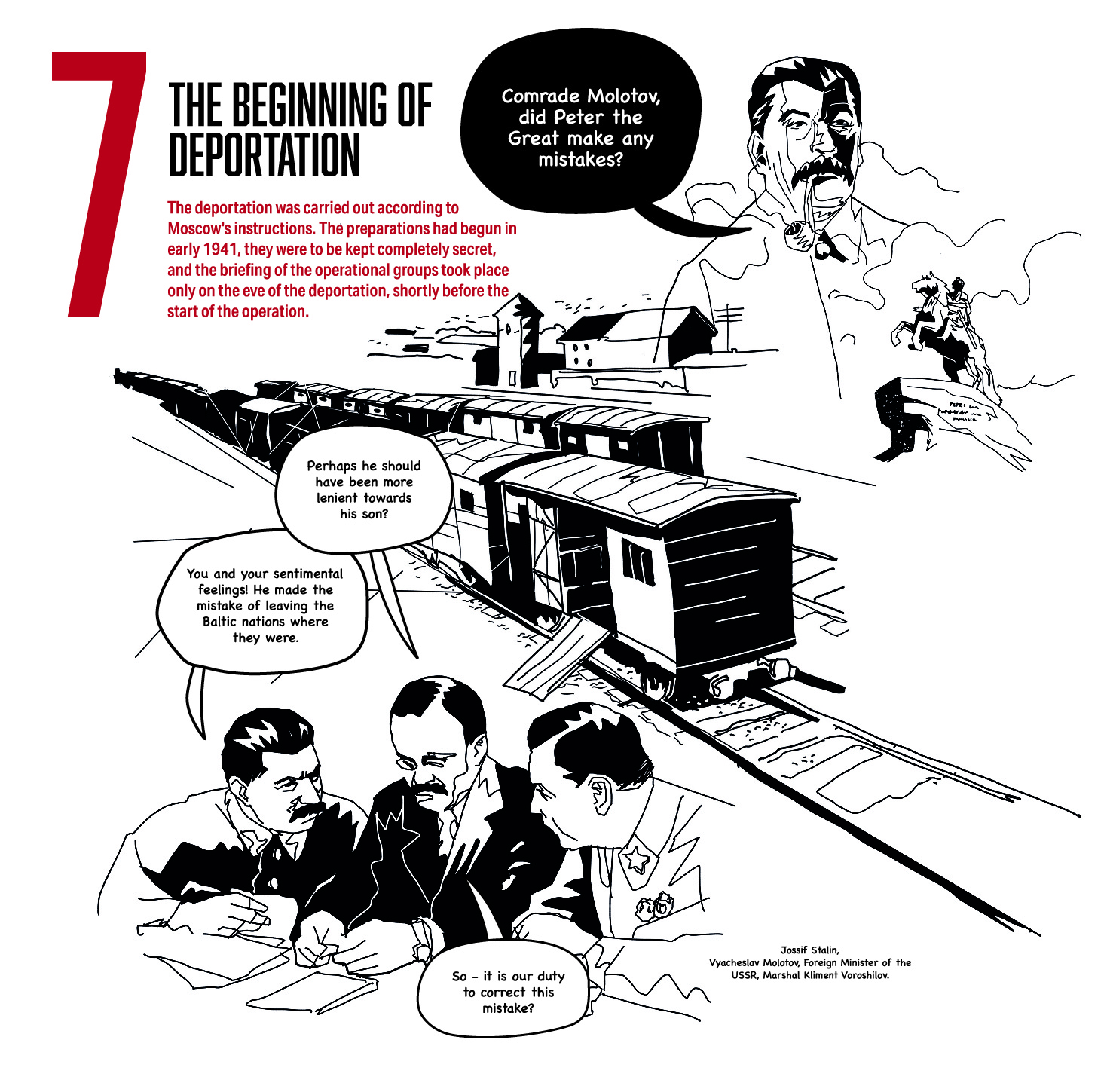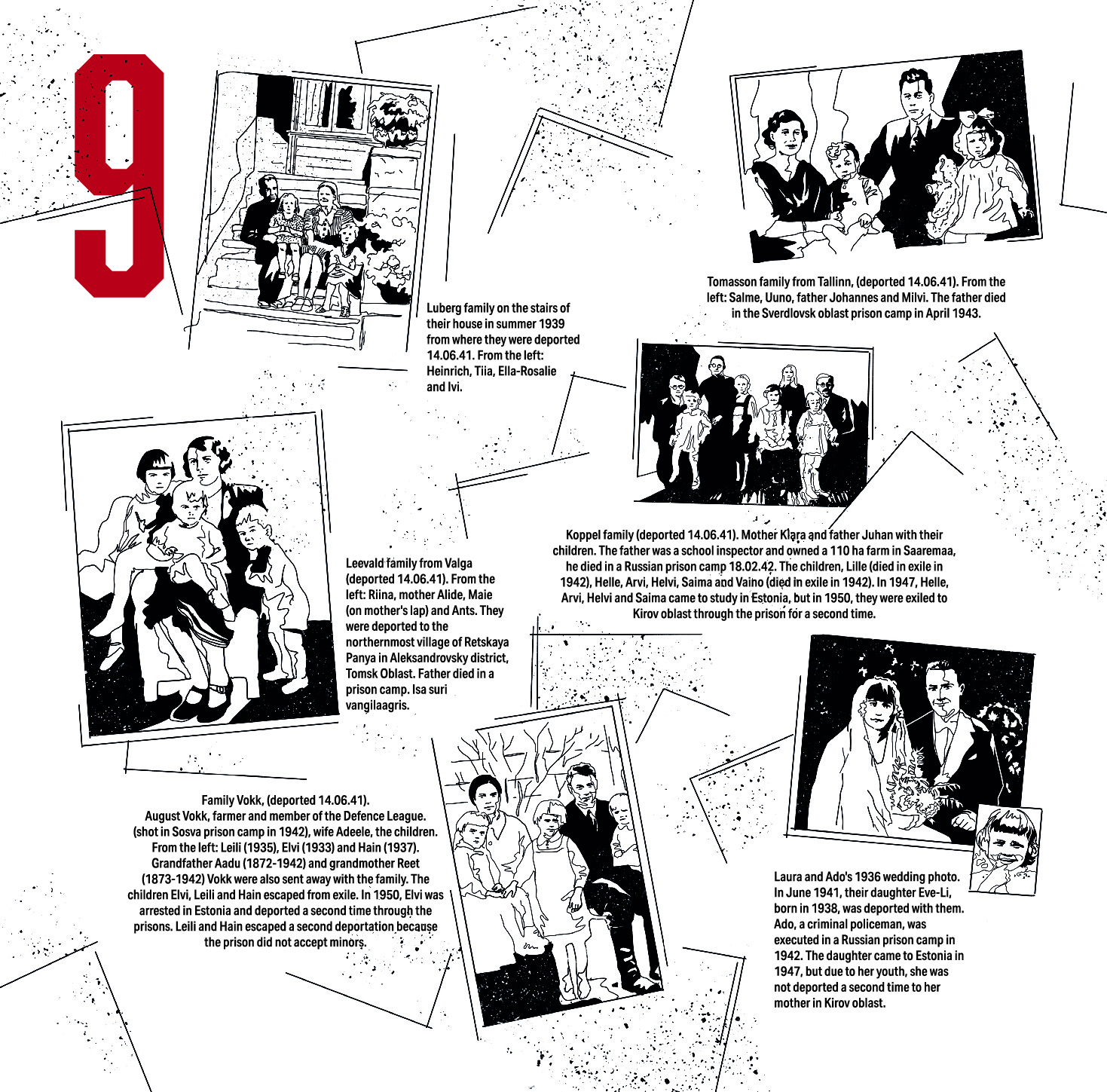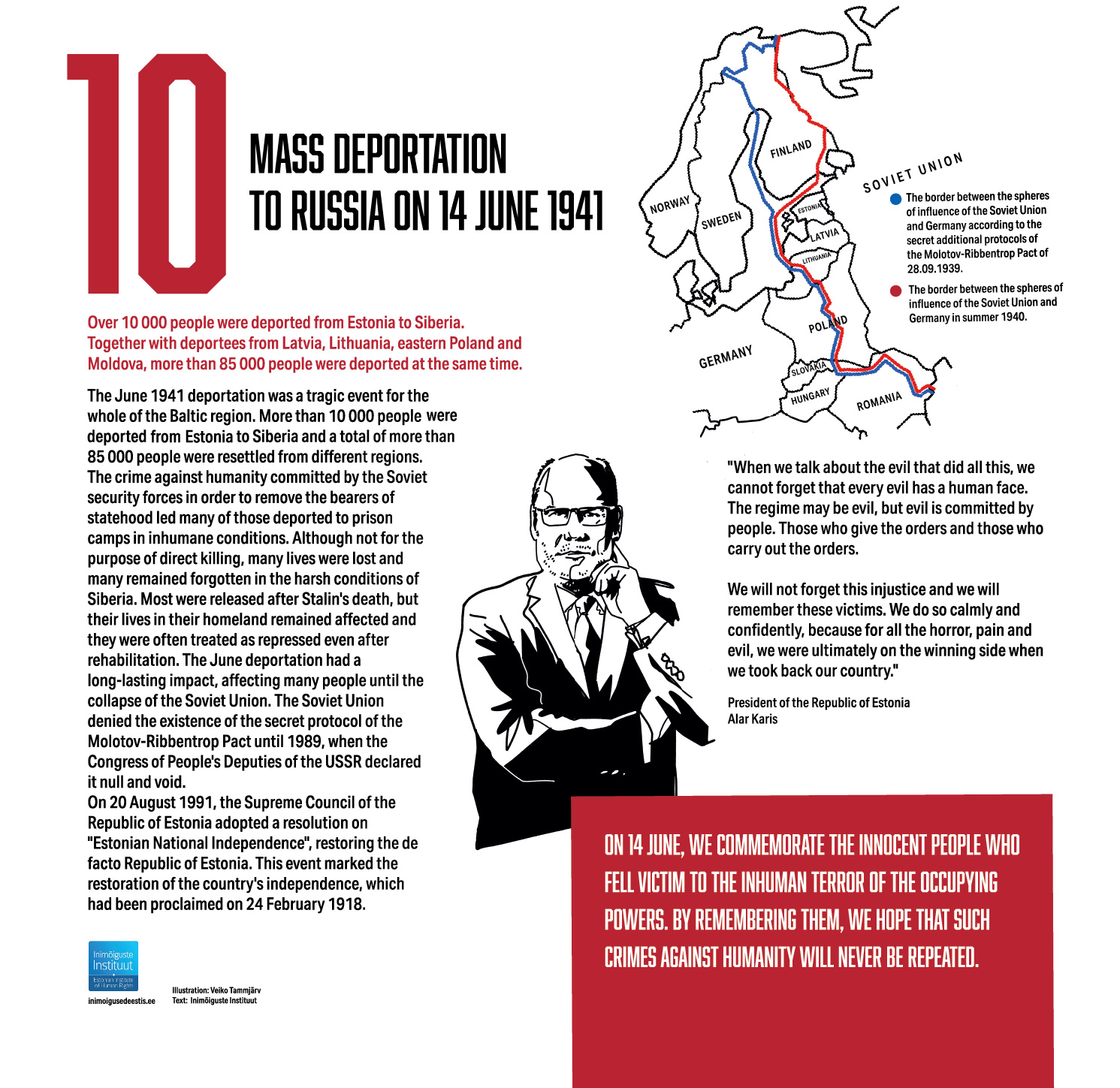June deportation
memorial 2024
14. June 1941
The Estonian Institute of Human Rights Institute's picture story of the June deportation, along with its antecedents and aftermath, provides a strong and emotional portrayal of one of the darkest moments in Estonian history. The images, based on Veiko Tammjärv's historical photographs, are expressive and powerful, with the sparse and contrasting use of color enhancing the impression of the tragedy. Accompanying texts briefly and factually explain the historical background, helping to place the events in a wider context. In the comic, both the deporters and their victims, including well-known historical figures and ordinary people caught in the wheels of history, are given a voice.
The picture story of the June deportation can be seen at Freedom Square in Tallinn 14.06-16.06.2024
Graphics: Veiko TammjärvTexts: Estonian Institute of Human Rights
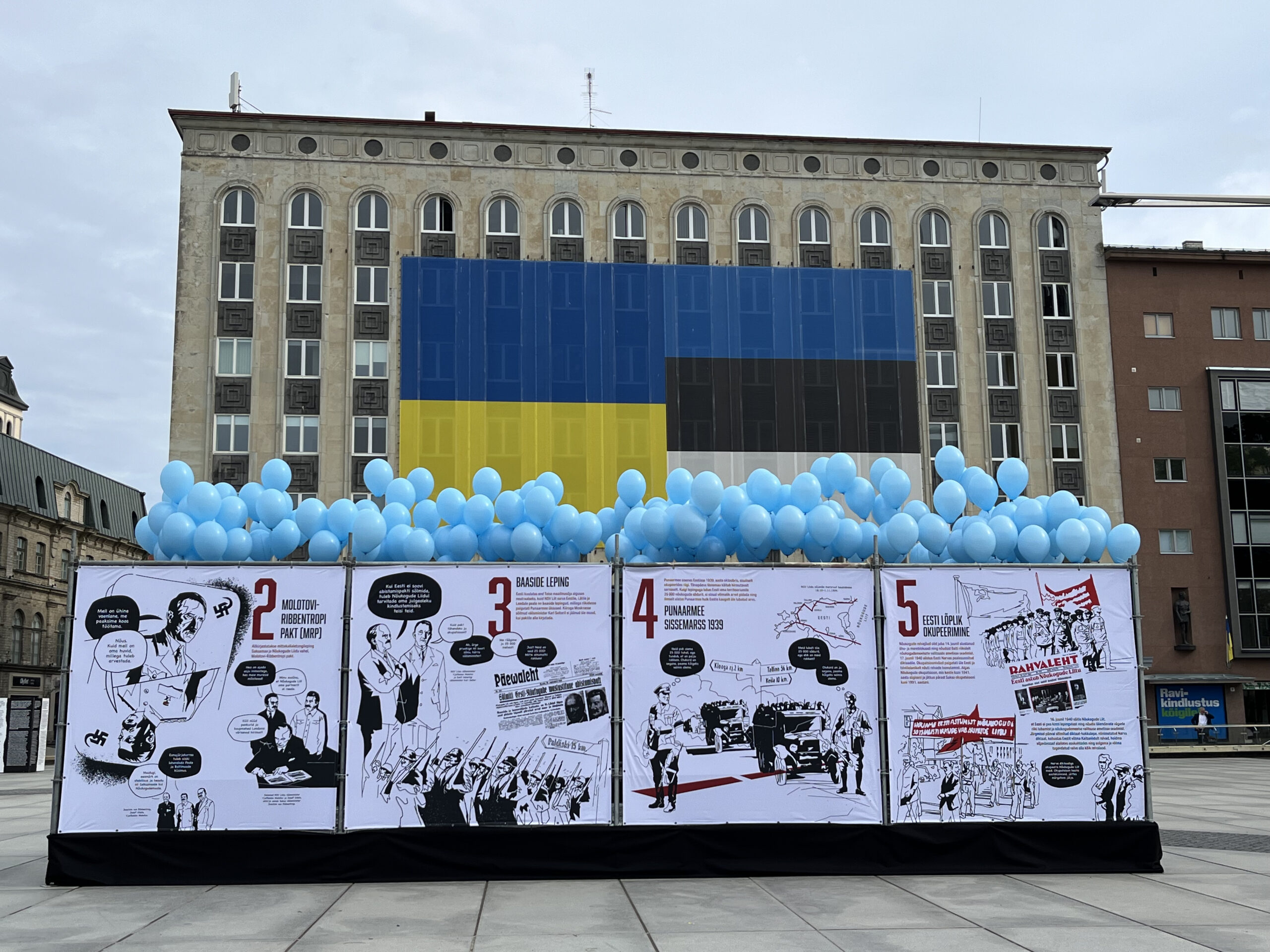
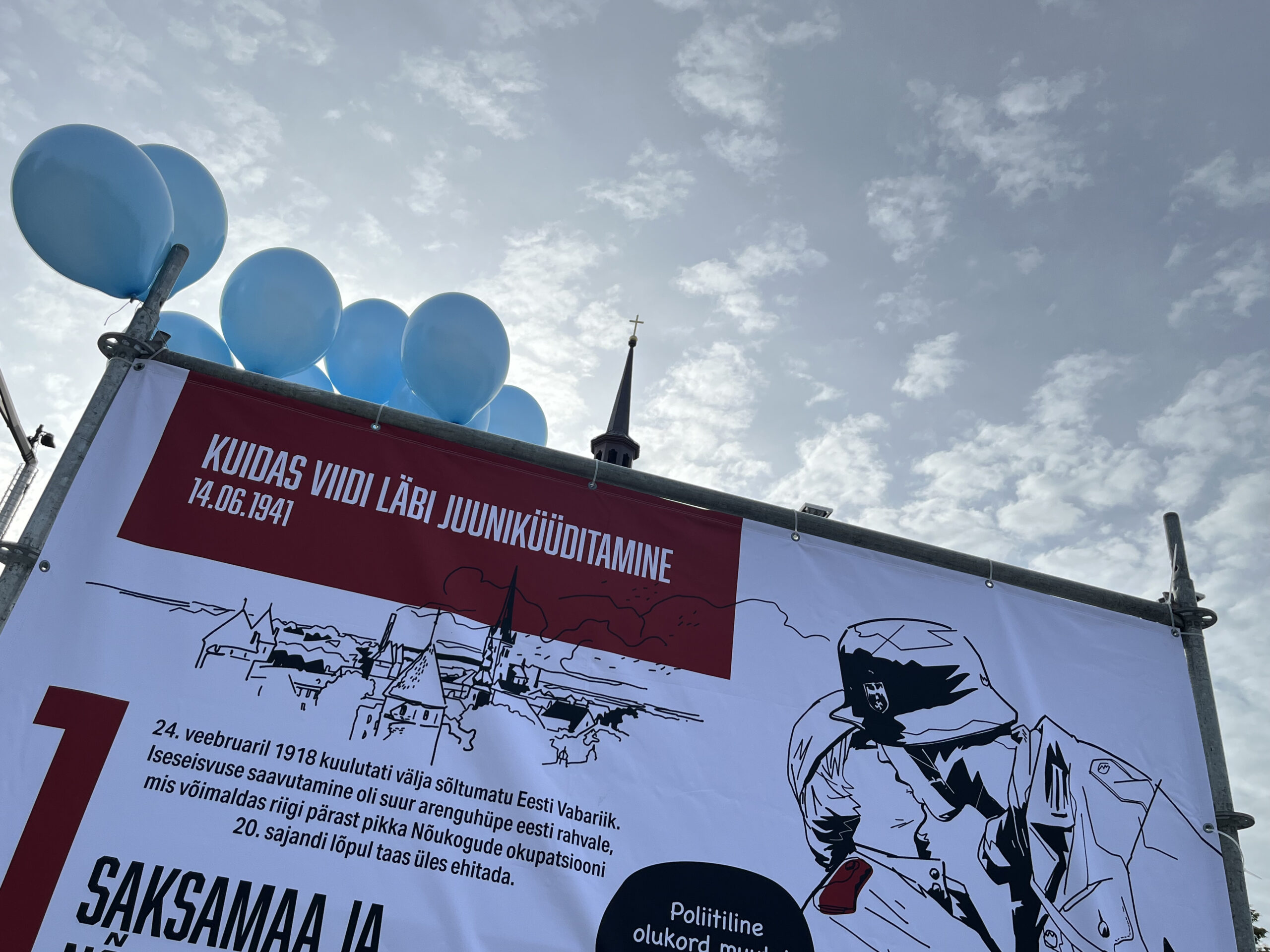
History
June 14, 1941, was a warm and sunny Saturday, the 24th week of the year. In the early hours, before sunrise, a knock was heard on the doors of thousands of homes across Estonia. The operation was planned to begin at dawn, with the sun rising between 4:30 and 5:30 in mid-June. However, in many places, the action was already over by then.
During that short summer night, 10,205 people were torn from their homes and deported thousands of kilometers away to Siberia in animal wagons, without any trial. Among the victims were 132 children under the age of one, including those born in the wagons, 1,378 children up to seven years old, and 15 people over 80 years old, the oldest being 87. Most of the young children and elderly died within the following year, many during the long journey in the animal wagons.
Deportees were officially allowed to take up to 100 kilos of personal belongings per family. In practice, everything depended on the local operative group, composed of Chekists, militiamen, and communist youth. They decided what could be taken, often allowing very little or nothing at all.
The mass crime committed by the Communists on June 14, 1941, was no accident. Deportations in the three Baltic states, Poland (conquered a year earlier), and a week before the outbreak of the German-Soviet war in Moldova, Western Ukraine, and Western Belarus, were typical of the Soviet Union's destructive treatment of subjugated nations. The goal was to destroy the elite of the subjugated people and create a totalitarian communist society of frightened citizens. The groups targeted for extermination were labeled "socially dangerous elements" by Soviet ideology.
People were shocked, as all this had seemed impossible just a day before, given the bright recent past. The demolition of the previous world began with the destruction of the Estonian state, but few had anticipated the massive brutality of the new regime. The enemy knew where to start: without their own country, the people had no one to demand even the most basic human rights, including the right to a homeland.


